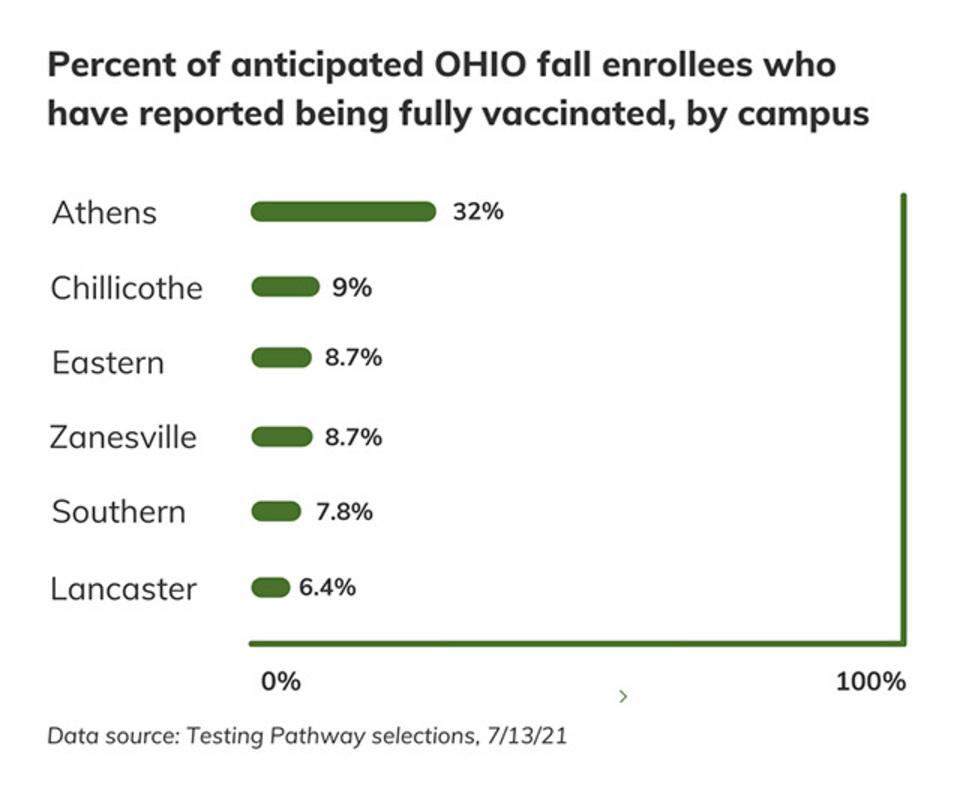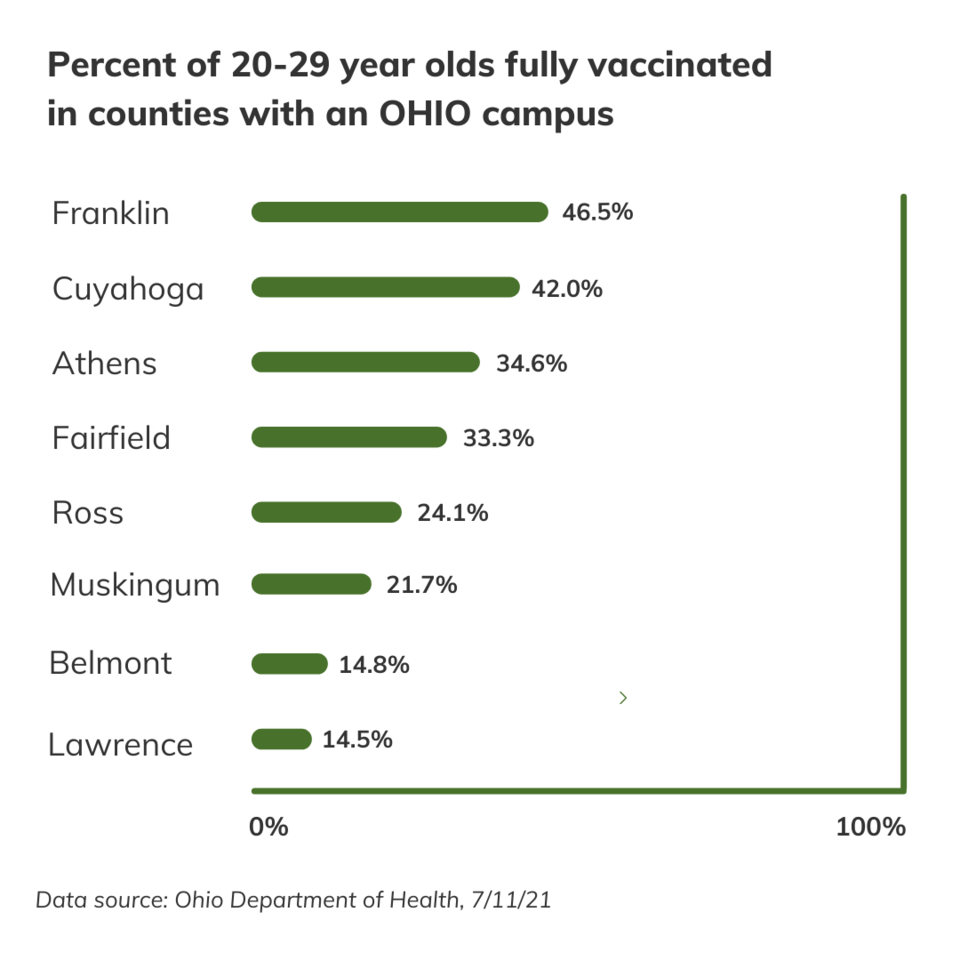
Public health update: July 13, 2021
Dear OHIO community members,
As my team prepares for a busy fall semester managing the university’s COVID-19 response, we are keenly aware of what national trends could mean on OHIO campuses.
The CDC reports that the highly transmissible delta variant is spreading at a rapid pace, now making up more than 50 percent of COVID-19 cases. And, although the vaccines are highly effective, widely available and free, study after study finds that young adults remain one of the most unvaccinated groups.
Ohio University student vaccination rates
The reality is that we likely will welcome back more unvaccinated students to the Athens campus than we had total students on campus in 2020-2021, and regional campuses also will see a large increase of unvaccinated students, faculty and staff. These estimates are based on current responses to OHIO’s COVID-19 Testing Pathway Program, which asks students and employees to either provide proof of vaccination and be exempt from weekly asymptomatic testing, or to opt for weekly testing. (Vaccination and testing are two of the best tools we have for preventing disease spread.)
So far, only 32 percent of the anticipated fall population of 19,186 students on the Athens campus has reported being fully vaccinated; less than 10 percent of students expected on OHIO regional campuses has reported being fully vaccinated. However, most students have not yet completed the Testing Pathway survey.

Although we still are gathering data, national and state trends lead me to believe we will land at approximately 50 percent of the student body vaccinated when classes begin – not enough to prevent disease spread on campus (estimated at 75 percent to 80 percent). Our regional campus rates are likely to be even lower as the vaccination rates in many of those counties are extremely low, particularly among those age 20-29. We already are seeing a high rate of transmission in Lawrence County, where only 25 percent of the population is vaccinated (even lower for those age 20-29: 14.5 percent).

With nearly all classes in person vs. only one-third last year, and with nearly double the number of students living in residence halls, I anticipate our COVID Campus Liaisons will be busy referring sick students to symptomatic testing and managing isolation and quarantine plans.
We could easily prevent nearly all sickness and quarantine on our campuses if most students, faculty, and staff were vaccinated. This would also prevent spread of disease into the communities where our campuses are located. I encourage everyone to get vaccinated and select a testing pathway as soon as possible. You can locate a free COVID-19 vaccine anywhere in the United States through the CDC website.
Faculty and staff travel approval process and CDC guidance
Last week the University updated its travel approval process to provide guidance for supervisors who are making decisions about employee travel. This guidance is specifically for essential business-related travel, not for personal travel. (Students should continue to follow the student travel policy.)
Because the CDC recommends that unvaccinated indivdiuals quarantine after travel for up to 10 days post-travel, supervisors are permitted to collect vaccination status of traveling employees in units where travel is part of an individual’s job description. This constitutes a business necessity because it affects scheduling coverage for unvaccinated employees who must work from home while quarantining after travel.
Although supervisors may not ask about employees’ personal travel, if you are unvaccinated and traveling for personal reasons, it is important to be aware of the risks and recommended precautions. The CDC recommends delaying travel until you are fully vaccinated. If you are not fully vaccinated, the CDC recommends the following precautions:
- Get tested 1-3 days before travel
- Get tested 3-5 days after travel and self-quarantine for 7 days (10 if you don't get tested
- Self-monitor for symptoms
- Wear a mask and take other precautions during travel
If you are unvaccinated and choose to travel, it could impact your colleagues’ health – please test after travel and consider building in time to quarantine.
Stay tuned for an announcement
As students, faculty, and staff continue to select their pathways through the COVID-19 Testing Pathway Program, we will be able to make more confident projections about campus vaccination rates. This information will help us understand the potential for disease spread on campus, and it will help us know how many asymptomatic tests we need to prepare to administer on a daily and weekly basis.
We appreciate the responses we have received already and encourage those of you who have not yet selected a pathway to do so as soon as possible. Stay tuned for an announcement this week that we hope will encourage more students to select their pathway soon!
Dr. Gillian Ice
Special Assistant to the President for Public Health Operations
